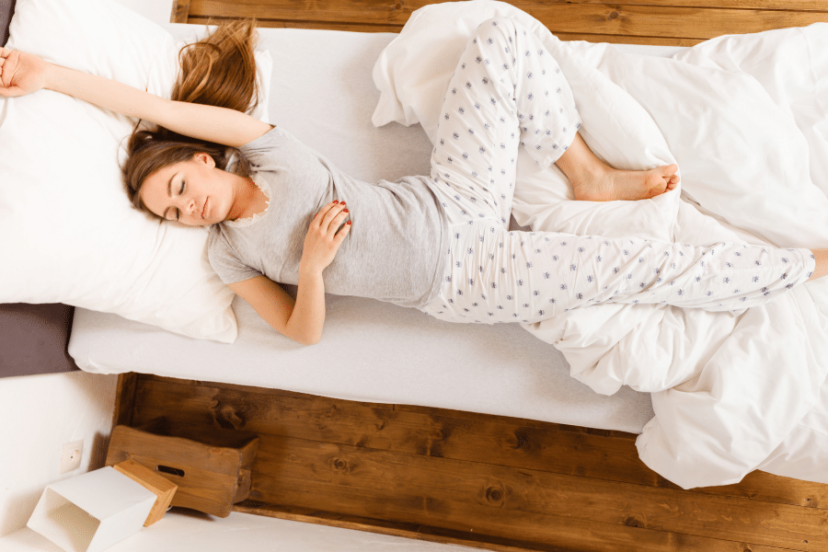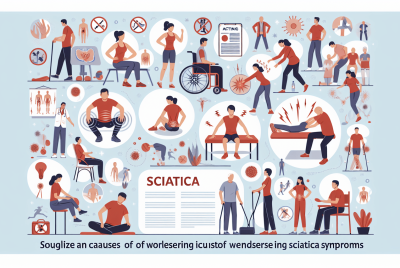Sleep Positions For Back Pain: Optimal sleeping positions for back pain sufferers..
Introduction: A Deeper Understanding of Sleep Positions for Back Pain Relief..
As a well-versed researcher and advisor in back pain relief strategies, I’ve uncovered significant evidence that the positions we adopt during sleep can greatly influence back pain. Understanding and adopting the right sleep positions can be a life-changer, offering immense relief from persistent discomfort.
Comprehensive Understanding of Back Pain
Detailed Causes of Back Pain
Back pain can originate from a variety of sources. Muscular strain from lifting heavy items, ligament sprains, ruptured or bulging disks, arthritis, skeletal abnormalities, osteoporosis, or even certain lifestyle factors such as poor posture, obesity, or psychological stress, can all contribute to back pain.
The Complex Relationship Between Back Pain and Sleep
Sleep and back pain have a complex, bidirectional relationship. Chronic back pain can interrupt healthy sleep, leading to a vicious cycle of pain and poor sleep. Research suggests that poor sleep can even exacerbate pain, leading to a continuous loop of discomfort and restless nights.
Importance of Professional Diagnosis
While understanding the causes of back pain is essential, it’s crucial not to self-diagnose. A healthcare professional can help accurately identify the source of your pain and provide a personalized treatment plan.
Exploring the Role of Sleep Positions
The Detailed Role of Sleep Positions For Back Pain Relief
Sleep positions can play a critical role in managing and alleviating back pain. Proper alignment and support of the spine during sleep can reduce pressure on the back, lessen pain, and lead to more restful and restorative sleep.
The Wrong Sleep Positions and Their Impact
Conversely, certain sleep positions can exacerbate back pain. For instance, sleeping on your stomach without proper support can strain your neck and lower back, while sleeping on a sagging mattress can disrupt spinal alignment.
For further detailed information on mattresses & their huge importance in relation to the wellbeing of your back, check out our recent article; Mattresses & Back Pain.
Diving into Optimal Sleep Positions for Back Pain Sufferers
The Fetal Position: A Closer Look
Adopting a fetal position, i.e., tucking your knees towards your chest, can help ease back pain, particularly for individuals with a herniated disc. This position can reduce bending of the spine and open up the space between vertebrae, relieving nerve root impingement. The knee pillow featured below is a great companion for the side sleeper – Simply click on the text or image for more details!
*Knee Pillow- Inner core is made of 100% high quality memory foam foam. In use for a long time to maintain comfort and will not be deformed, made of pure environmentally friendly materials
The Science Behind Sleeping on Your Back with Knee Support
Sleeping on your back with a pillow placed under your knees can help maintain the spine’s natural curve. This position evenly distributes your body weight, reducing pressure points and supporting wider areas of your body, thus minimizing back pain.
Sleeping on Your Stomach with a Pillow Underneath
Although stomach sleeping can lead to back and neck pain, if it’s the only way you can fall asleep, adding a pillow under your lower abdomen can help. This position can relieve pressure on the discs and ligaments in your spine, mitigating back pain.
Reclined Position: Not Just for Relaxing
Reclining isn’t just for lounging— it can also be an effective sleep position for people with conditions like isthmic spondylolisthesis. Sleeping in a reclined position can reduce the angle of the spine and relieve pressure on the nerves, reducing pain. An orthopedic pillow or pillow set could make a world of difference, an example of which you can see below – Simply click on the image or text below to learn more & explore the many options!
*Multi-position supports quickly to conform to your body shape and height without sliding down. Improve circulation and relieve shoulder neck & back pain.
Unraveling the Science Behind These Sleep Positions For Back Pain Relief
Anatomy of the Spine and Sleep Positions
Understanding the anatomy of the spine and how different sleep positions impact it can help you see why these positions can relieve back pain. The spine has a natural S-curve, and any sleep position that helps maintain this curve can potentially alleviate discomfort.
Impact of Sleep Positions on Spinal Health
Prolonged periods in a single position, such as during sleep, can place stress on certain areas of your spine. Choosing a sleep position that evenly distributes body weight can significantly minimize this stress, contributing to overall spinal health.
Practical Guide to Implementing these Sleep Positions
Helpful Tips for Changing Sleep Positions
Change is never easy, especially when it involves altering a habit as ingrained as your sleep position. Begin with small adjustments, use supportive elements like pillows, and remain patient as your body adjusts to the new position.
Importance of Patience in Change
Remember that change doesn’t happen overnight. You might find it difficult initially, but with time and consistency, your body will adapt to the new sleep position.
The Role of a Supportive Environment
Creating a sleep-friendly environment can make a significant difference. Ensure that your bedroom is cool, quiet, and dark, and invest in a good quality mattress and pillows to provide sufficient support and comfort.
Harnessing the Power of Pillows
Pillows aren’t just for your head—they can be incredibly effective tools in maintaining a back-friendly sleep position. Depending on your chosen position, place them under your abdomen, between your knees, or under your lower back. Our recent article specifically on orthopedic pillows is great for further detailed information, check it out here!
Conclusion
It’s clear that sleep positions can play a significant role in managing back pain. By understanding and adapting our sleep habits, we can take an active role in minimizing back pain and improving the quality of our sleep. Remember, however, that this is just one piece of the puzzle. Always consult with a medical professional for personalized advice.
Further Resources
Here are two additional resources that align with the information provided in this article that may be of further interest:
- Sleeping Positions That Help Relieve Back Pain: A detailed article by the Cleveland Clinic discussing various sleep positions that can help alleviate back pain.
- Choosing the Best Sleep Position: This is a medical commentary from Harvard Medical School that elaborates on how different sleep positions can affect health issues like back pain.
Frequently Asked Questions
- Do sleep positions really affect back pain? Yes, sleep positions can either alleviate or exacerbate back pain. Maintaining proper spinal alignment during sleep is crucial.
- Which position is most recommended for lower back pain? Sleeping on your back with a pillow under your knees can help maintain the natural curvature of your spine, often making it the most recommended position.
- Why is sleeping on the stomach generally not advised? This position can cause both neck and back strain due to the difficulty in maintaining the spine’s natural alignment. However, if necessary, placing a pillow under the lower abdomen can help.
- How quickly can I expect relief from changing my sleep position? Each individual is different, and while some may experience relief relatively quickly, others may need more time to adjust and feel a noticeable difference.
- What kind of mattress is best for alleviating back pain? A medium-firm mattress often provides the best balance between support and comfort. It can help maintain spinal alignment while also cushioning the body’s pressure points.






